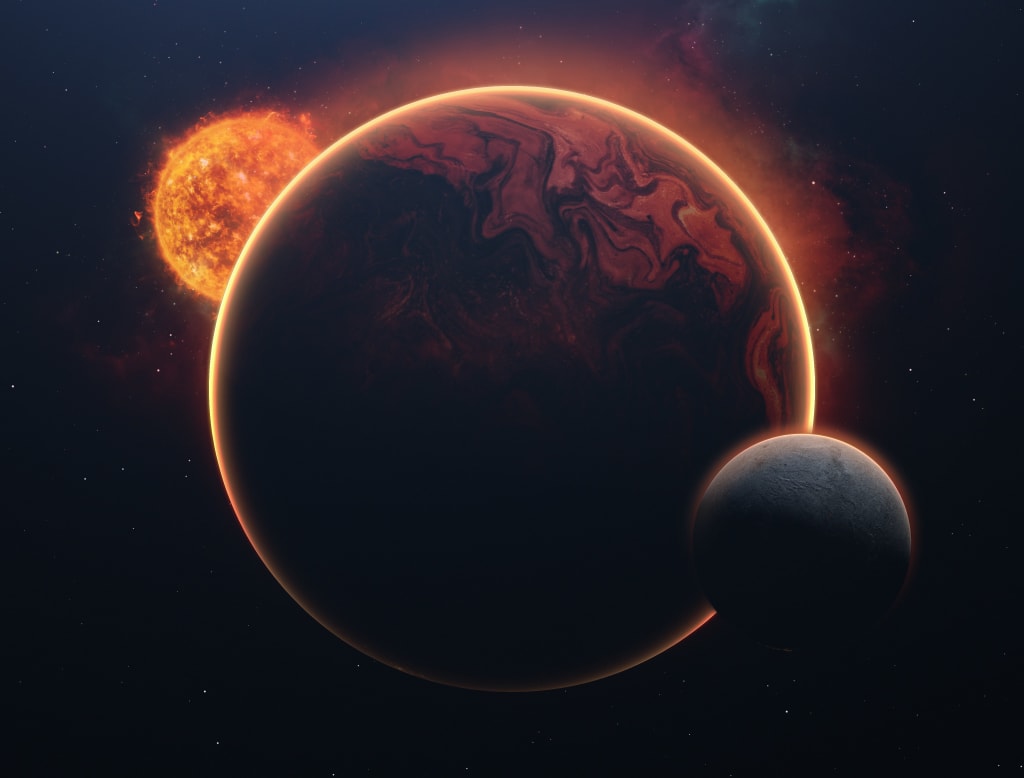4 billion years ago, there were three Earths in the solar system? Scientists have discovered that the birth of human beings is an unrepeatable miracle!
There were three Earths in the solar system?

The earth is the only planet where life is born in the entire universe. Humans continue to explore the universe and try to receive signals from extraterrestrial civilizations, but no signs of life have been found on other planets. Could it be that the Earth is the only planet in the universe that harbors life? If so, isn't Earth too lonely? But if other intelligent life exists in the universe, where would they be? We know that life can thrive as long as there is liquid water, moderate temperatures, an atmosphere, and sunlight. Interestingly, scientists found that there were "three earths" in the solar system 4 billion years ago! Then why are we the only ones left? Please look down.
In fact, there are many planets with such conditions in the universe, such as Kepler 452b, Gliese 581d, Proxima b, etc. They are all rocky planets located in the habitable zone, and intelligent life is likely to live in these planets. The planet is born. However, the actual surface conditions of these planets, because of the distance, we have no way of knowing. Currently limited by the level of human technology, no extraterrestrial life has been found so far.
In addition, a large number of interstellar organic molecules exist in the vast space. These large amounts of interstellar organic molecules are absorbed by many rocky planets, so the formation of life is not lacking in nutrients. There are also some extremely tenacious primitive microorganisms that can even travel through interstellar space, they can fly to other suitable planets, survive and reproduce, like blown dandelions, spread to survive and reproduce, like a high-level colonizer, extraterrestrial Organisms may exist right under the surface of Mars. For example, marine life similar to Earth's deep ocean, there may also be life in the deep ocean under the surface ice sheets of Europa, Callisto, and Titan.
There may be many types of life in the entire universe, but there may be very few species that can create civilization, because life is a very complex process and encounters many uncertainties, and life species like the earth provide it with data A billion years of development time, which is also rare. Although the earth has suffered several mass extinctions, biological species continue to develop in various forms. Therefore, it is very difficult for highly intelligent biological species to form. Because the level of human technology is relatively backward, we do not know the situation in the depths of the universe. know.
Human beings may have been more advanced than those of us. In order to confirm this view, scientists continue to send probes into space. According to a large amount of data from exploration, the final conclusion is that there were three Earths in the solar system 4 billion years ago. , life may have been born on them, our current earth is one of them. The surfaces of these three planets, composed of solid metals and silicates, belong to research planets. In the past few decades, we have sent many unmanned probes to Venus and Mars, and scientists have found that their environments are extremely bad.
The temperature of Venus is extremely high, while the temperature of Mars is very low, and there is no oxygen. At least in such an environment, scientists have not found other traces of life. So what would Venus and Mars look like 4 billion years ago? Why has it become a barren planet now, and is there only one planet suitable for survival? Measured by the radiant intensity of sunlight, they operate in a habitable environment like the Earth. Based on current signs on Venus and Mars, astronomers speculate that Venus and Mars may have had an ocean of liquid water 4 billion years ago.
In the first few years, Venus was a warm and humid planet. Life could be born in primitive oceans. They may be carbon-based life. Like life on Earth, they may also be other life forms. However, Venus is relatively far from the sun. Closer, a large amount of liquid water is produced. As the temperature of the sun gradually increases, Venus becomes hotter and hotter and evaporates, and the volcanic activity of Venus continues to release carbon dioxide, resulting in a strong greenhouse effect. Without the action of the ocean, carbon dioxide will not be locked up, They get into the air and cause significant global warming, driving higher and higher temperatures on Venus.
On the earth, the deep sea, green plants and their minerals absorb a large amount of carbon dioxide, so the earth is not easy to cause the temperature to rise due to severe global warming. In the end, the liquid water is completely evaporated on Venus, and the possible species of life will also die out. Although life cannot exist on the surface of Venus, scientists believe that there is some strange life that may exist in the atmosphere of Venus. In the relatively high air of Venus, moderate atmospheric pressure and moderate temperature, organic compounds may be born, and life may evolve, and it may also be a habitable planet.
At present, the landforms on Mars have a lot of traces of water washing, and some iron ore, which can only be produced in a water environment. All these evidences can prove that there was a lot of liquid water on Mars in ancient times. So, how did Mars become no longer suitable for species to survive? A huge basin currently exists in the north of Mars, and its surface in the polar region is equivalent to 2/5 of the surface area of Mars, which was caused by a large collision.
The study of this huge basin shows that about 3.9 billion years ago, the north pole of Mars was hit by a dwarf planet with a diameter of about 2,000 kilometers. The core of Mars was completely changed in this large collision, causing the magnetic field of Mars to almost disappear, and the atmosphere of Mars was not protected by a magnetic field. The liquid water also disappeared with the continuous volatilization, and Mars quickly became a barren land. At present, the atmosphere on Mars is almost non-existent, but some water ice remains in the polar regions.
In addition, some seasonal liquid water may appear in certain areas of Mars. This type of water is also very salty and can remain liquid temporarily in the low temperature environment of Mars. The average temperature on Mars is minus 63 degrees Celsius, which is extremely low. If humans want to immigrate to Mars in the future, they must first restore the magnetic field of Mars and generate a large amount of greenhouse gases to heat Mars and melt the solid water on Mars. Mars will be much smaller than Earth, and it will cool down from its molten state faster than Earth, so liquid water on Mars may appear earlier, suggesting that life on Mars may have evolved earlier.
In this way, when Mars is hit by other celestial bodies, the blown up rock formations are likely to bring Martian life into outer space and fall to the earth to become the origin of life on earth. In addition, in Martian meteorites, scientists have found traces of life once, proving once again that Mars is the birthplace of life on Earth. But the evidence is far from convincing, and on Mars, Curiosity has detected carbon-bearing organics in some rock formations.
This means that there was life on Mars in ancient times, and it is very likely that there is life on Mars today. Billions of years ago, they did not go to extinction, but went to the subsurface of Mars and evolved a different survival system. Compared with Venus and Mars, our earth has always been favored by nature and has always been a habitable star. In the future, the earth may be like Venus and Mars, no longer suitable for human habitation. Friends, how do you see?
About the Creator
sayre laylah
Tired of monotonous climbing moves, but every step is close to the top
Enjoyed the story? Support the Creator.
Subscribe for free to receive all their stories in your feed. You could also pledge your support or give them a one-off tip, letting them know you appreciate their work.






Comments
There are no comments for this story
Be the first to respond and start the conversation.